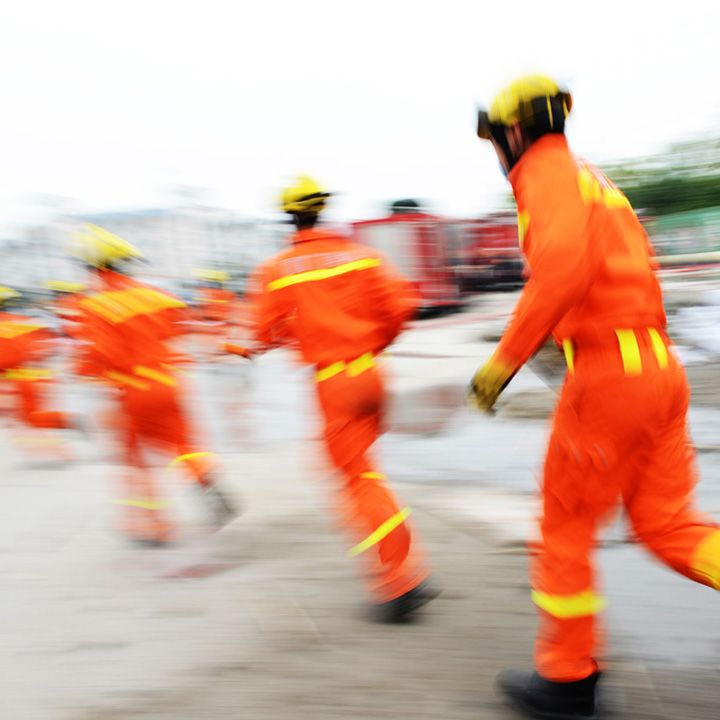California wildfires: How to rebuild stronger and protect against future damage
Californians begin 2018 by recovering and rebuilding after one of the worst years for wildfires in the state’s history. As Californians take the steps necessary to begin cleaning up and rebuilding, we have an opportunity to plan for and mitigate future damage. It is vital that we minimize wildfire risks with prescribed burns to control fuel levels and investment in future preparedness planning.
In 2017, residents witnessed more than 9,000 fires burning more than one million acres across the state. To us, these aren’t just statistics we read in the news. These are events that we experienced firsthand as our colleagues were in evacuation zones, watching towering smoke and flames burn the communities where we live and work.
Unfortunately, properly preparing to minimize the risks of fire isn’t a leading topic once a fire’s impact is a memory, and often doesn’t get as much attention as other, equally-worthy, community needs. Our current methods of fire management can be traced back to the wildfires of 1910 when conditions similar to 2017 contributed to fires in the West, burning millions of acres. A policy of full fire suppression was adopted, meaning every fire was put out immediately. This strategy led to a dangerous fuel build up that contributed to the 1988 Yellowstone National Park fire. This fire was a wakeup call and the start of an awareness of the importance of prescribed fires to control fuel build up and minimize future wildfires of that scale and intensity.
While prescribed burns are helpful, they are not a complete solution. The real opportunity for communities to minimize their fire risks comes from creating a multi-agency plan that takes into account everything from water access to emergency routes with adequate space for access to and evacuation from all areas of the community.
Once a fire event occurs, many communities face the same challenges. There is strong pressure to rebuild quickly and approve permits so that the community can get back in their homes and normalcy. In doing this, communities miss an important opportunity to not just rebuild to the standards they had before the fire, but to rebuild in a way that takes into consideration the need for buffers, wider roads for emergency access, additional water sources, or even a possible revision of subdivision standards to ensure they are consistent with CalFIRE regulations.
We are fortunate to work for an environmental planning firm with roots in California that date back to the 1960s. Now, we are focused on working within our communities to develop environmental solutions related to recovery, rebuilding, and mitigation in the wake of natural disasters. Other Californians aren’t so lucky. Here are several actions that communities across the state can take to help recover from the 2017 California fires, rebuild smarter, and be better prepared for the next fire event.
- Erosion control, slope stabilization, and storm water control: Create a comprehensive control and stabilization plan that includes assessment, inspection, and implementation as well as stabilization of disturbed and burned areas.
- Hazard tree assessment and removal: Inventory trees damaged or killed that could pose a safety and access risk as well as necessary related environmental assessments and documentation.
- Cultural resource assessment: Identify and assess impacts to significant historic buildings or archaeological sites and facilitate streamlined Section 106 of the National Historic Preservation Act processes to expedite funds to flow to the community, and assist with tribal relations and state compliance.
- Emergency permitting and agency coordination: Streamline processes and foster key, long-term relationships to facilitate agency coordination and required environmental permit approvals.
- Biological resources assessment: Assess fire effects, and subsequent recovery efforts, on protected resources including impacts on biological resource areas, mitigation sites, and other conserved lands.
- Habitat restoration: Build a restoration program from assessment and planning to implementation and monitoring, to support recovery of sensitive resources, as well as assessment and rehabilitation of prior restoration sites affected by disaster.
- Environmental analysis and reporting: Conduct environmental analysis and reporting required to be compliant with applicable environmental regulations for post-fire restoration activities.
- Future preparedness planning: Develop a Community Wildfire Protection Plan in coordination with local, state, and federal fire officials.
These are just some of the many steps communities can take as they recover and begin to rebuild to minimize future fire risks. But as each community has unique needs, it is necessary to remember there is not a one-size-fits-all solution that can be applied. We understand the risks of fire and local regulations and we have lived through the aftermath of these devastating events. If you have questions or want to learn more about wildfire mitigation planning and rebuilding, we invite you to reach out.
